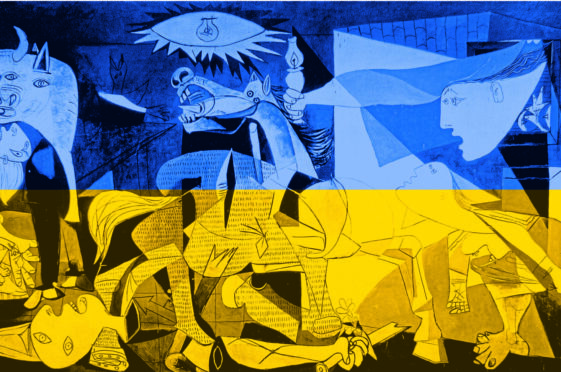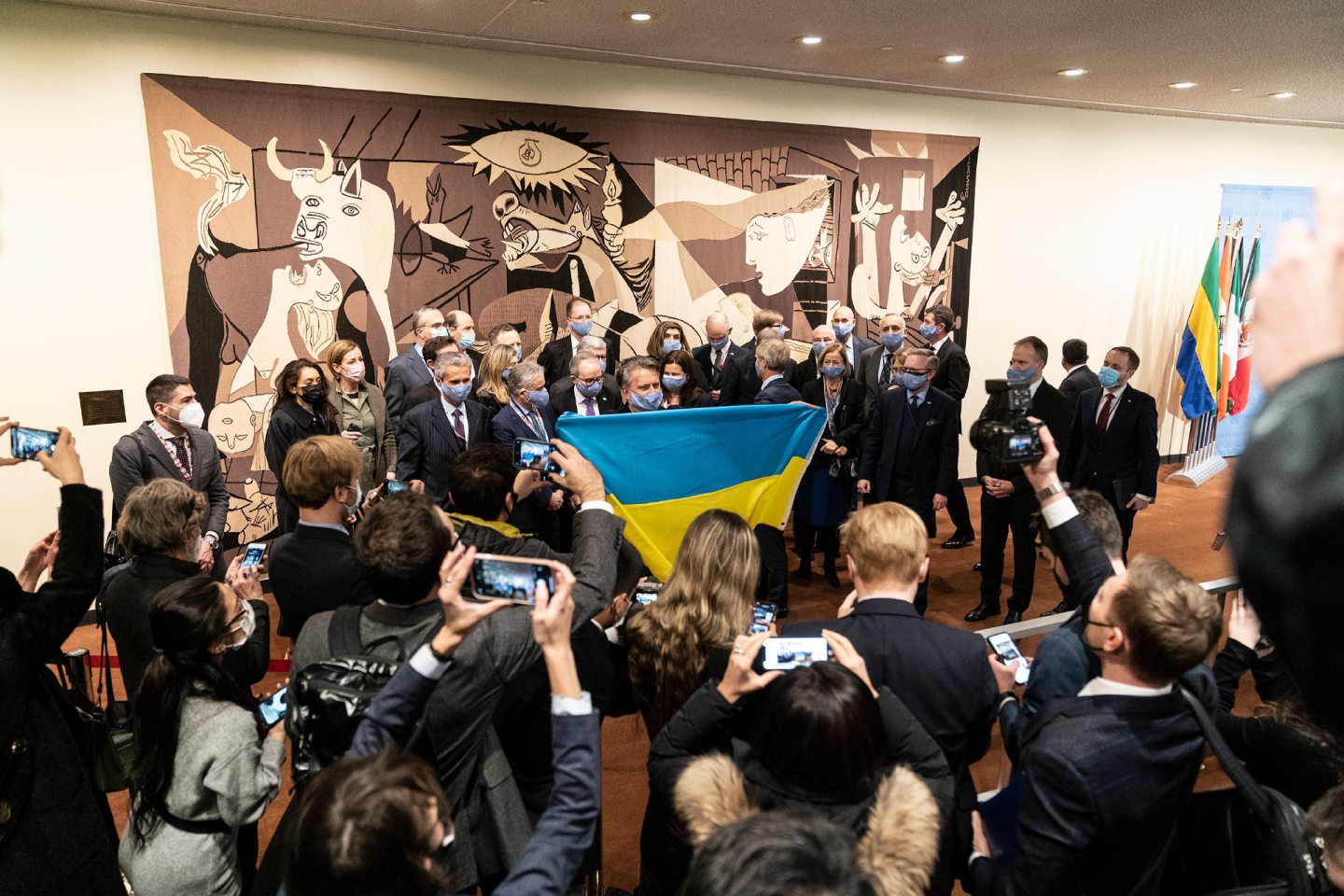
A merciless, criminal aerial attack on civilians, a world horrified by harrowing eye-witness reports and images captured by courageous journalists before being disputed by shameless claims of fake news and propaganda. It could, tragically, be Ukraine today but instead was Guernica, in Spain, almost exactly 85 years ago.
The town was the first to be laid waste by indiscriminate carpet bombing when, on April 26, 1937, Nazi pilots acting on behalf of Franco’s nationalists intervened in the Spanish Civil War with devastating effect.
The atrocity would unleash a terrible new tactic in modern warfare and inspire one of the world’s most brutal and enduring works of art, Picasso’s painting named after the devastated Basque town. And the onslaught against civilians is echoing through the ages in towns and cities from Mariupol to Kharkiv today.
Addressing the Spanish parliament last week, Ukrainian president Volodymyr Zelensky remembered Guernica as he described the horror being inflicted on his own country today while appealing for support and Western resolve.
He said: “Imagine that people now – in Europe – live for weeks in basements to save lives. From shelling, from air bombs. It’s April 2022, and the reality in Ukraine is the same as in April 1937. When the whole world learned the name of one of your cities – Guernica.”
In Guernica, All buildings were targets and all the men, women, and children inside them. Those who tried to flee were machine-gunned as they fled.
The town was a historic symbol of Basque independence. It was full of refugees and farmers, and peasants who had come in for market day. There was no obvious military target apart from an arms factory nearby and that was undamaged.
The truth of what happened there may have remained hidden but for four correspondents: Christopher Holme, of Reuters, George Steer, Noel Monks, and Mathieu Corman. They were having dinner in a Bilbao hotel after an exhausting day when a distraught Basque Government official told them a town some 15 miles away had been bombed and was still burning.
They left immediately. All four reporters were clear on the basic facts. German aircraft from the Condor Legion fighting with Franco’s Nationalists had systematically annihilated the ancient Basque town. As with Ukraine, their reports shocked the world.
Civilian massacres were not new in warfare and the Spanish Civil War had already seen many by both sides. However, Guernica triggered particular outcry because it was close to home – in the middle of Europe and the shocking but clear-sighted eyewitness reporting.
Spain was already awash with propaganda or fake news, as some like to call it today. The Nationalists’ press office first said bad weather prevented any aircraft flying that day then bizarrely blamed miners for dynamiting the houses.
The truth could not be denied. Holme had identified German markings on unexploded bombs. A gifted poet, he later wrote:
“Spokesmen will get up among the well-fed and comfortable
And tell those dead and the unliving survivors
What fires they lit to consume their own homes.
What mines they laid to blow themselves up.
What lies they told of an air-fleet which destroyed their world.”
It remains unclear who gave the order for the attack on Guernica but it revulsed the world and, like today, prompted a wave of support for refugees fleeing the conflict.
More than 500 Scots went to fight Franco. Nurses and doctors also volunteered. Among them was Archie Cochrane, considered the father of evidence-based medicine and while there he met George Orwell, who in 1984 presaged Newspeak, the language of double-talk now deployed daily in Moscow where invading forces are peace-keepers and democratically-elected governments are Nazis.
Guernica was the start of carpet bombing which in later years engulfed Warsaw, Coventry, Dresden and now Mariupol and other Ukrainian cities.
The eyewitness accounts from Guernica match the horror being filed daily from towns and cities across Ukraine. The facts are vital, what has happened in the weeks of this war will be pored over by war crime investigators for years to come but art can expose a bigger truth and, like Picasso’s painting, Holme’s poem about Guernica retains its terrible resonance:
“The world ended tonight.
There in that unreal desolation
Of molten tunnel, flame-arched passageway,
House-hung setpieces dripping cement and bricks,
A handful of dim creatures
Are scratching for fragments of their slaughtered world.”

Enjoy the convenience of having The Sunday Post delivered as a digital ePaper straight to your smartphone, tablet or computer.
Subscribe for only £5.49 a month and enjoy all the benefits of the printed paper as a digital replica.
Subscribe © Lev Radin/Pacific Press/Shutters
© Lev Radin/Pacific Press/Shutters